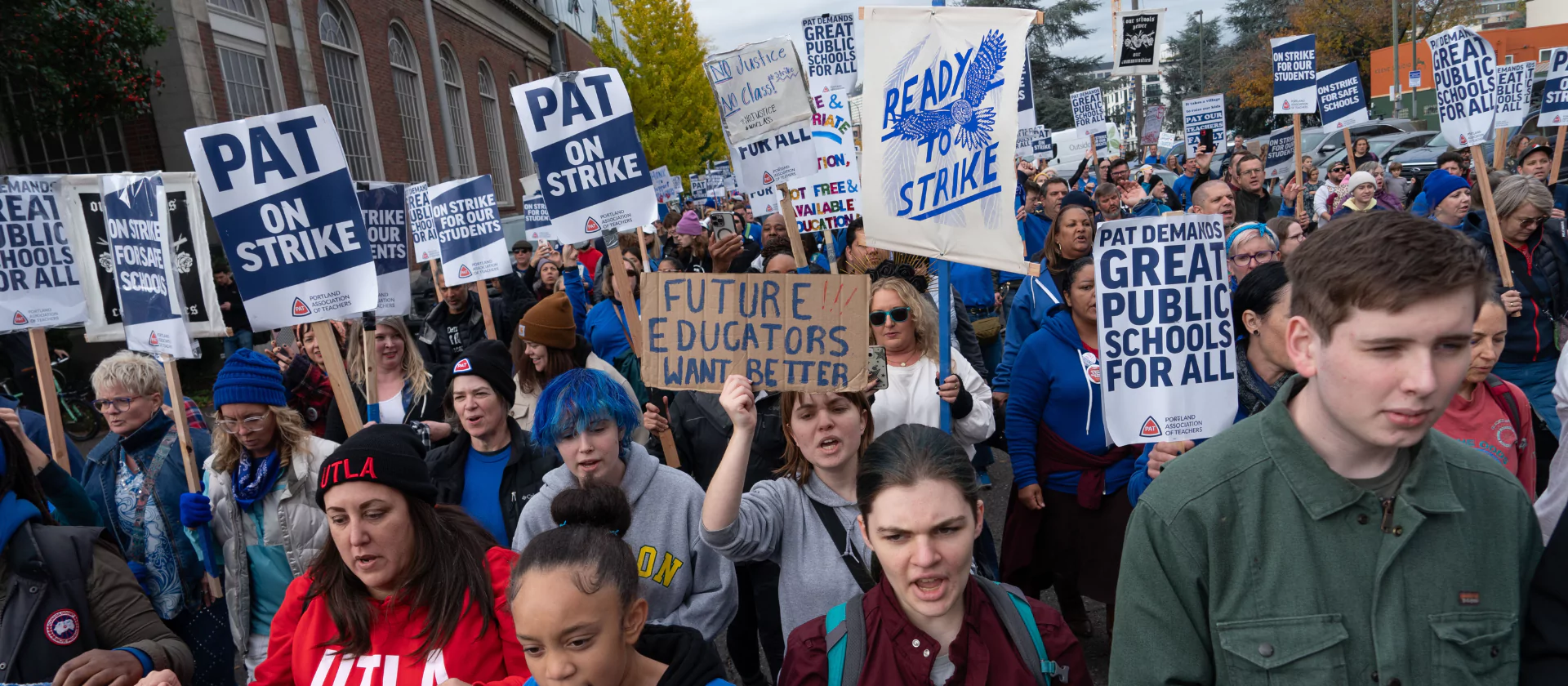The U.S. Census Bureau released new data today on the extent of poverty and on the change in household median income in Oregon and the nation. According to an analysis by the Oregon Center for Public Policy, a non-profit research institute in Silverton, the new numbers show that gains from the economic boom of the 1990s have dried up and left more people in poverty.
Median household income and the poverty rate in Oregon remain relatively unchanged between 1999-2000 and 2000-2001, both decreasing by a statistically insignificant amount. The new poverty figures cover the last year of a period of tremendous economic prosperity in Oregon (2000) and a year marked by recession (2001).
Oregon’s poverty rate held steady between 1999-2000 and 2000-2001. The Census Bureau’s data indicate that poverty in Oregon fell by a statistically insignificant amount, from 11.7 percent to 11.3 percent. Similarly, the poverty rate in 2000-2001 was essentially the same as ten years ago. In 1990-91, the last time the survey data included both an economic expansion and a recession, Oregon’s poverty rate was 11.4 percent.
The Census found that 15.8 percent of Oregon’s youth (under age 18) were poor in 2000-2001, a statistically insignificant difference from 1999-2000, when it was 16.8 percent.
According to Census data, median household income in Oregon was $42,479 in 2000-2001. Household income was slightly lower than the previous two-year average, but the difference was not significant.
While the poverty rate remained relatively constant over the last decade, the number of poor Oregonians increased along with the state’s population. Using Census data, the OCPP calculated that there were 389,500 poor Oregonians in 2000-2001, compared to 334,00 in 1990-91.
“The great boom of the 1990s did not reduce poverty,” said Michael Leachman, a policy analyst with the Oregon Center for Public Policy. At the peak of the economic boom Oregon saw a slight improvement in the poverty rate. “It took the full length of the economic expansion of the 1990s to reduce the poverty rate in Oregon. With just one year of a recession, Oregon’s improvement was wiped out.”
“The increase in the number of poor over the course of the 1990s and into this century shows the need for government programs that invest in helping people,” said Leachman. “We have yet to build a social safety net that can withstand the pressure of a bad economy.”
Non-government sources of assistance are being spread thin. “Demand on food banks is higher today than 10 years ago, and the state’s failure to reduce poverty adds to that pressure,” said Charles Sheketoff, executive director of the Oregon Center for Public Policy.
The Center suggested that a multi-pronged approach, involving strengthening the safety net and improving incomes, would combat poverty. “We need a strong safety-net to help people through rough times,” Sheketoff said. “But the best way to help lift families out of poverty is to increase their income. Raising the minimum wage would help address poverty.”
Oregonians will vote on such an increase in November. Measure 25 would raise the minimum wage from $6.50 to $6.90 per hour and annually adjust the minimum wage for inflation in future years.
“Oregonians also need to take affirmative steps to create a high wage economy that benefits all Oregonians, not just the privileged few,” said Sheketoff.
“Too many new jobs in Oregon are low wage, and most of the benefits of the boom were captured by the already well-off,” Sheketoff added.
The annual survey used by the Census to estimate the poverty rate and median income for Oregon is based on approximately 1,000 households statewide. Census and the Oregon Center for Public Policy use two-year averages of the Census statewide data to provide more reliable figures.






